Assignment #16: Produce a number of 12 scans with 3 interesting materials or material groups. Let your creativity be your guide. Publish your scans on the blog one image after the next. Add a paragraph of description reflecting the specific outcome and your choices.
Wednesday, October 24, 2012
Wednesday, October 17, 2012
Scan Artist: Christian Staebler
Assignment #15: Research 1 artist who works with scanners/scanography creatively and make it an entry on your blog.
Christian Staebler is a French scanography artist who mainly works with materials from nature, such as leaves, flowers, insects, and animals. He creates his scan collages for layouts for books, magazines, and other print materials. He started scanning the living world outside his house, starting with his backyard, which progressed into elaborate and colorful collages.
I found his work to be particularly colorful, but hard to look at. These living things seemed odd - though photography also puts them into a still image, the scanning, on the other hand, gives them a rather fake look (like High Dynamic Range [HDR] photography today). The arrangements seem stiff to be, rather than how nature actually feels - alive and flowing. However, I also think that this way of documentation is definitely valid and successful.

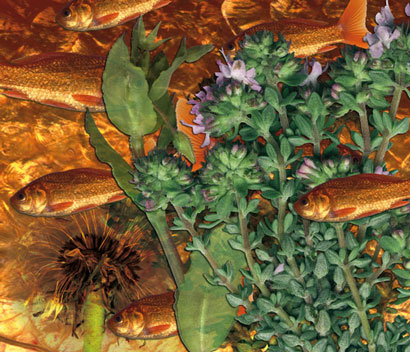
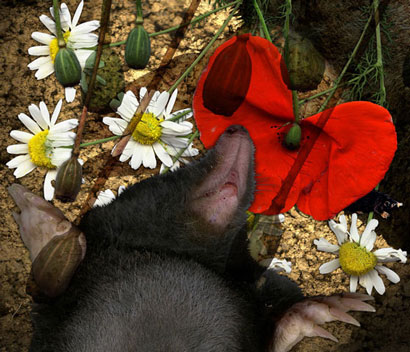
Christian Staebler is a French scanography artist who mainly works with materials from nature, such as leaves, flowers, insects, and animals. He creates his scan collages for layouts for books, magazines, and other print materials. He started scanning the living world outside his house, starting with his backyard, which progressed into elaborate and colorful collages.
I found his work to be particularly colorful, but hard to look at. These living things seemed odd - though photography also puts them into a still image, the scanning, on the other hand, gives them a rather fake look (like High Dynamic Range [HDR] photography today). The arrangements seem stiff to be, rather than how nature actually feels - alive and flowing. However, I also think that this way of documentation is definitely valid and successful.



Photography Artist:Robert Mapplethorpe
Assignment #14: Research an artist who works with photography creatively and put up a blog post.
Robert Mapplethorpe is known for his black and white portraits of celebrities, flowers, himself, and nudes. The homoerotism in some of his photography was highly controversial, especially in regards to funding for the arts, since his patrons gave him large amounts of money to buy space for him to live in and work.
I've been interested in Mapplethorpe for some time - initially due to the sexual nature of his work, from a study of visual representation of sexuality, but my interest began to grow with his work in regards to race and popular culture.
Mapplethorpe had a particular interest in photographing black males (which was some of the roots of controversy). During the time, AIDS was a up and coming issue (he, himself, died from complications related to AIDS) and his interest in nude black males only provoked the already existing rise in homophobia.
He also photographed the famous people of his time, such as Andy Warhol (below) and Patti Smith (who was at time his partner until he realized he was gay). There are many photographers who focus on celebrities today, such as Tyler Shields, but unlike paparazzi photographers, Mapplethorpe and these particular celebrity photographers set up portrait sessions rather than follow their celebrities. This implied the close relationship between the arts and popular culture.
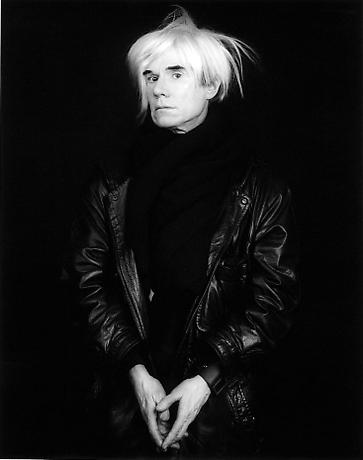
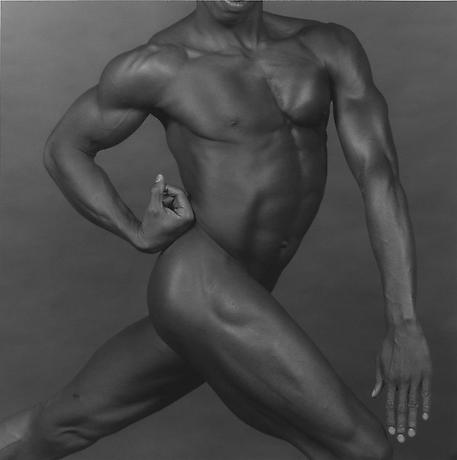
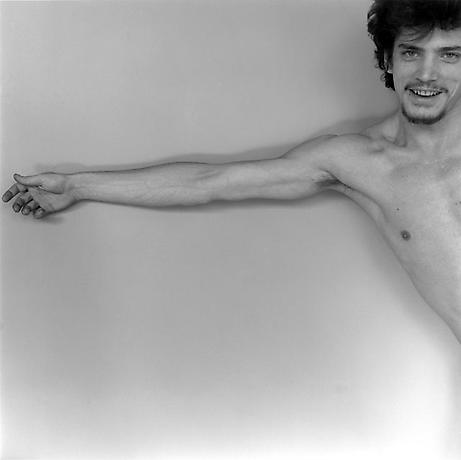
Robert Mapplethorpe is known for his black and white portraits of celebrities, flowers, himself, and nudes. The homoerotism in some of his photography was highly controversial, especially in regards to funding for the arts, since his patrons gave him large amounts of money to buy space for him to live in and work.
I've been interested in Mapplethorpe for some time - initially due to the sexual nature of his work, from a study of visual representation of sexuality, but my interest began to grow with his work in regards to race and popular culture.
Mapplethorpe had a particular interest in photographing black males (which was some of the roots of controversy). During the time, AIDS was a up and coming issue (he, himself, died from complications related to AIDS) and his interest in nude black males only provoked the already existing rise in homophobia.
He also photographed the famous people of his time, such as Andy Warhol (below) and Patti Smith (who was at time his partner until he realized he was gay). There are many photographers who focus on celebrities today, such as Tyler Shields, but unlike paparazzi photographers, Mapplethorpe and these particular celebrity photographers set up portrait sessions rather than follow their celebrities. This implied the close relationship between the arts and popular culture.



Photography and Teaching Children
Assignment #13: Think about photography for a little bit and about its materiality and the process of taking a picture. Make 3 connections to children. (I skipped the photographic lesson plan as I don't want to ask too much from you).
In a search for how to teach photography to children, I came upon several lists of "tips" for teaching children digital photography (i.e., http://digital-photography-school.com/13-lessons-to-teach-your-child-about-digital-photography; http://content.photojojo.com/photojojo-original/teaching-photography-to-children/)
Children can be easily taught to click a button, especially in digital photography, but I think it's important for children to also understand photography from a film point of view. Photography is a lot about physics as well as creativity. And while digital photography allows, as it seems, endless photograph-taking, it opens up both a venue for experimentation and laziness. Film photography, on the other hand, or teaching digital photography like it was film, allows each photograph to receive more attention - guiding children to look more rather than pushing a button seems rather important.
However, on the more positive side of digital photography, children can make lots of "mistakes" and enjoy experimentation. Allowing them to reflect on what they've just taken on a screen gives them another chance to approach a photograph differently, or for them to reach satisfaction with the first photograph.
The portability of a camera is also essential to photography. Children experience new things all the time, and because a camera can be so accessible these days, asking them to journal things that interest them is very plausible. Though writing is obviously essential to a child's education, they can learn that photography is both fun/creative and useful as a documentation tool - like a memory bank.
In a search for how to teach photography to children, I came upon several lists of "tips" for teaching children digital photography (i.e., http://digital-photography-school.com/13-lessons-to-teach-your-child-about-digital-photography; http://content.photojojo.com/photojojo-original/teaching-photography-to-children/)
Children can be easily taught to click a button, especially in digital photography, but I think it's important for children to also understand photography from a film point of view. Photography is a lot about physics as well as creativity. And while digital photography allows, as it seems, endless photograph-taking, it opens up both a venue for experimentation and laziness. Film photography, on the other hand, or teaching digital photography like it was film, allows each photograph to receive more attention - guiding children to look more rather than pushing a button seems rather important.
However, on the more positive side of digital photography, children can make lots of "mistakes" and enjoy experimentation. Allowing them to reflect on what they've just taken on a screen gives them another chance to approach a photograph differently, or for them to reach satisfaction with the first photograph.
The portability of a camera is also essential to photography. Children experience new things all the time, and because a camera can be so accessible these days, asking them to journal things that interest them is very plausible. Though writing is obviously essential to a child's education, they can learn that photography is both fun/creative and useful as a documentation tool - like a memory bank.
Grouping Photographs into a Narrative
Assignment #12: We began in class to create an interesting narrative by using your photograph as a starting point and adding 9 images from the web. As you tell your story, don't use additional captions or titles; have the images speak for themselves. Arrange your images and upload them to a Pinterest board or on your blog in the order you seem fit. If you haven't already, finish this assignment. Add a few sentences about this experience and what you were trying to achieve or were this assignment got you on your blog.
http://pinterest.com/angieartzoo/mistakes/
Rather than telling a particular story with images found online, I looked through my own 23,000+ photos on Facebook and I found photographs from the last few months that I should have deleted for a reason or another, but did not, due to "mistakes" in photography.
After putting the 10 photographs together, I began to appreciate my "mistakes" more, whether it was compositional, or a raindrop fell on the lens, or lighting problems, etc. Each "mistake" essentially had a story on its own, and became very much part of the photograph.
http://pinterest.com/angieartzoo/mistakes/
Rather than telling a particular story with images found online, I looked through my own 23,000+ photos on Facebook and I found photographs from the last few months that I should have deleted for a reason or another, but did not, due to "mistakes" in photography.
After putting the 10 photographs together, I began to appreciate my "mistakes" more, whether it was compositional, or a raindrop fell on the lens, or lighting problems, etc. Each "mistake" essentially had a story on its own, and became very much part of the photograph.
Processing an Idea from a Photograph
Assignment #11: After listening to your peers and their approaches with their image; would you want to alter/redo/change/some of your ideas now? If so, feel free to do so; indicate potential changes on your blog. Homework #5 (Assignment #9) had you come up with ideas about what you can do with your image creatively. Realize one of them and bring the output to our next class or put it up on your blog. If your idea is not feasible in the amount of time, chose another one; stay within reason.
I tried to re-create the effect that I had with my photo. I snapped different parts of a bike, as if they were mistakes in trying to capture the entire image of the bike. I played with Photoshop until I was able to recreate the image of the bike and the circular blur as well. I decided to approach an idea like this because I was curious to how a "mistake" could be intentionally approached, as a creative process.
I tried to re-create the effect that I had with my photo. I snapped different parts of a bike, as if they were mistakes in trying to capture the entire image of the bike. I played with Photoshop until I was able to recreate the image of the bike and the circular blur as well. I decided to approach an idea like this because I was curious to how a "mistake" could be intentionally approached, as a creative process.
Wednesday, October 10, 2012
Documentation Artist: Guy Delisle
Assignment #10: Research an artist who works with documentation as an artistic process.
Guy Delisle is known as a Canadian comic book author and animator.
He documented his experiences working as an animator in China (Shenzhen [2000]) and North Korea (Pyongyang [2003]) via comics. He also documented his experiences traveling in Myanmar/Burma (Burma Chronicles [2007]) and most recently, Israel (Chronicles of Jerusalem [2011]). Written originally in French, his books have been translated into many languages, including English, Polish, Spanish, Finnish, and Czech, and have been best sellers in France.
It seems as if he writes and draws and photographs about seemingly everything - the weather, the city, the politics, the culture, interesting objects, and his own presence and work, so the end result is a part-autobiographical, part-travel-journal, and part-anthropological-ethnography.
While Delisle is at location, he sketches and writes in his journals and takes photos when he can to document exact structures or objects or experiences. Though he is in "dangerous" areas, he documents the happiness of the people as it exists - the daily life, not the war or politically-torn states.
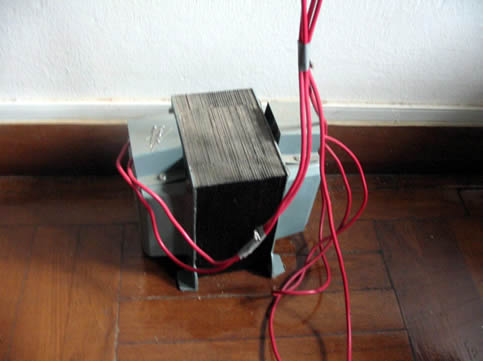
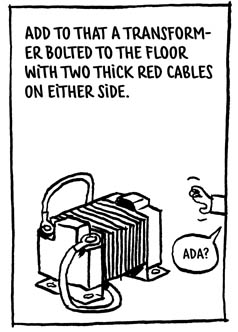

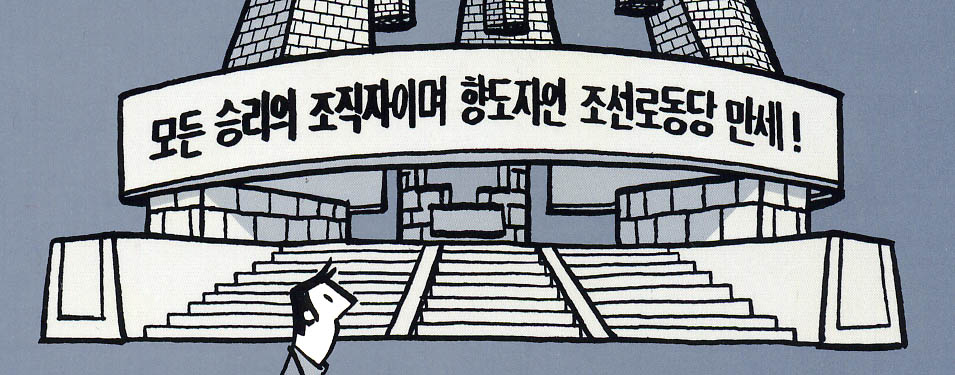
Guy Delisle is inspired by the comics he attains and artists from the places he is documenting. The following comic is from Burma:
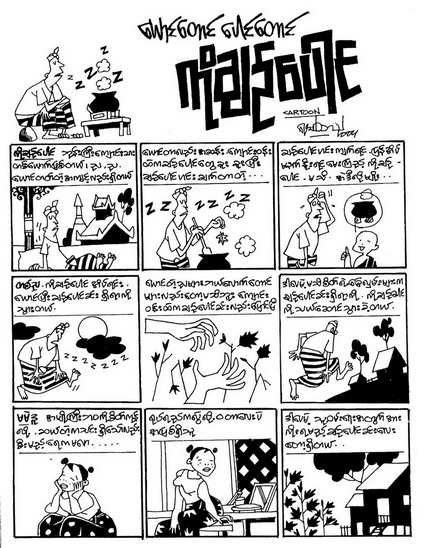
Guy Delisle is known as a Canadian comic book author and animator.
He documented his experiences working as an animator in China (Shenzhen [2000]) and North Korea (Pyongyang [2003]) via comics. He also documented his experiences traveling in Myanmar/Burma (Burma Chronicles [2007]) and most recently, Israel (Chronicles of Jerusalem [2011]). Written originally in French, his books have been translated into many languages, including English, Polish, Spanish, Finnish, and Czech, and have been best sellers in France.
It seems as if he writes and draws and photographs about seemingly everything - the weather, the city, the politics, the culture, interesting objects, and his own presence and work, so the end result is a part-autobiographical, part-travel-journal, and part-anthropological-ethnography.
While Delisle is at location, he sketches and writes in his journals and takes photos when he can to document exact structures or objects or experiences. Though he is in "dangerous" areas, he documents the happiness of the people as it exists - the daily life, not the war or politically-torn states.




Guy Delisle is inspired by the comics he attains and artists from the places he is documenting. The following comic is from Burma:

Storytelling with Photography
Assignment #9: Post the picture you took in class on your blog; write a paragraph that tells the story of this picture (what have you noticed that made you take this picture?). Come up with 2 ideas where you would like to go with this picture creatively and write them down so you can share your ideas in our next session.
I went outside with Becca H., and we were discussing where to go with the assignment, and because she forgot her ID, she had to tell the security officer that she was only stepping outside for a minute without an ID. This caught my attention - the security officer was there every day (whether it was that one specifically or another). So, I wanted to give the security booth a face, so I asked him if it was okay to take a picture of him.
In the process of stepping back and turning on the camera (switching the on switch, and rotating the lens and camera body around to the typical position), I accidentally took the picture below.
Two things came to mind after seeing this picture much later - the picture itself was an accident, and it was taken in a portrait orientation, rather than the expected landscape, also an accident.
There are a lot of accidents that happen in artmaking, but also in just about everything else. There are happy ones and disappointing ones, and in art, you choose to fix it, work with it, or toss it out altogether.
In digital photography, the interesting thing about making mistakes is that you can make "mistakes" over and over and continue to "mass-produce" new images. In Photoshop, we can hide, discolour, and orient a photograph. However, composition and perspective is an important aspect to photography and though cropping is available, composition and perspective (and focus as well) generally cannot be modified after a photograph is taken.
So how can I/we expand a photograph's composition and perspective beyond Photoshop? A photograph is a flat image, so how can we change our perspective while still working with the flatness?
I think it would be interesting to play with various ways to "display" the image, either digitally or physically, to bring out the story of the "accident."
I went outside with Becca H., and we were discussing where to go with the assignment, and because she forgot her ID, she had to tell the security officer that she was only stepping outside for a minute without an ID. This caught my attention - the security officer was there every day (whether it was that one specifically or another). So, I wanted to give the security booth a face, so I asked him if it was okay to take a picture of him.
In the process of stepping back and turning on the camera (switching the on switch, and rotating the lens and camera body around to the typical position), I accidentally took the picture below.
Two things came to mind after seeing this picture much later - the picture itself was an accident, and it was taken in a portrait orientation, rather than the expected landscape, also an accident.
There are a lot of accidents that happen in artmaking, but also in just about everything else. There are happy ones and disappointing ones, and in art, you choose to fix it, work with it, or toss it out altogether.
In digital photography, the interesting thing about making mistakes is that you can make "mistakes" over and over and continue to "mass-produce" new images. In Photoshop, we can hide, discolour, and orient a photograph. However, composition and perspective is an important aspect to photography and though cropping is available, composition and perspective (and focus as well) generally cannot be modified after a photograph is taken.
So how can I/we expand a photograph's composition and perspective beyond Photoshop? A photograph is a flat image, so how can we change our perspective while still working with the flatness?
I think it would be interesting to play with various ways to "display" the image, either digitally or physically, to bring out the story of the "accident."
Wednesday, October 3, 2012
Creative Practice vs. Documentation
Assignment #8: In order to investigate the creative abilities of new media and new media technologies, we will work on a number of actions throughout the semester. Action #1 was to bring a piece of technology into the classroom. Action #2 is to document something. This can be a creative process, an installation, an artistic practice, or an art object; try to stay with something that’s related to the arts. The documentation can be done in whichever way as long as you use a piece of technology, be it a camera, a recorder, or whatever comes to your mind. By asking you to document it, I want us to focus on the difference between creative practice and documentation. Bring your results to the next class or just add them to your blog.

Based off of "Dear Photograph" - one photograph is taken as a documentation, but the memory is revisited. I took a photograph of my painting in progress, and now 3 years later, printed that photograph and "revisited" the painting by lining it up.
"Dear Photograph" example:

Drawing/Painting on a Digital Device
Assignment #7: Create at least 1 drawing and 1 painting on either one or two of those devices: a computer, a tablet, and/or a smartphone; using a keyboard, your fingers; or a stylus. Put some time into this and see how far you can get to make this a creative outlet.
Drawn with Wacom Intuos4 Wireless Pen Tablet and Stylus in Photoshop CS5 (Windows 7).
Drawn with Wacom Intuos4 Wireless Pen Tablet and Stylus in Photoshop CS5 (Windows 7).
Painted with iPad (1st Generation) and Joysticker's Paintbrush in MyBrushes (iOS).
Subscribe to:
Comments (Atom)









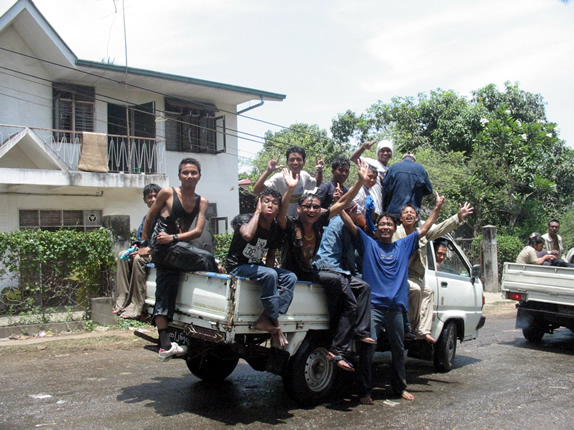
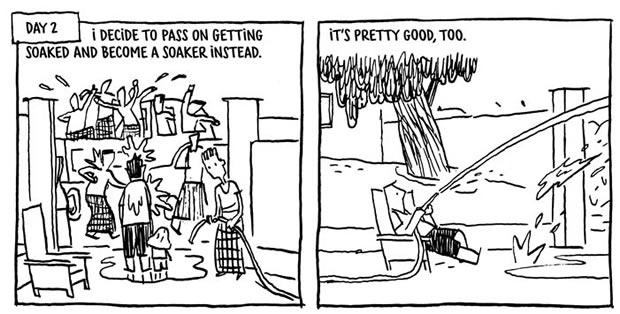

.JPG)



